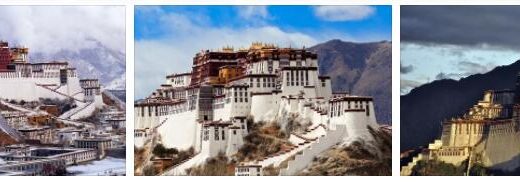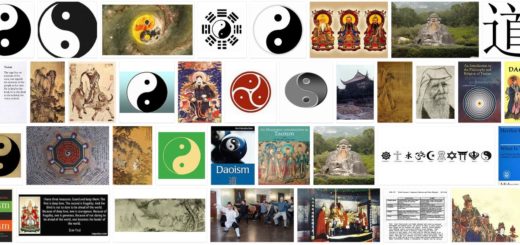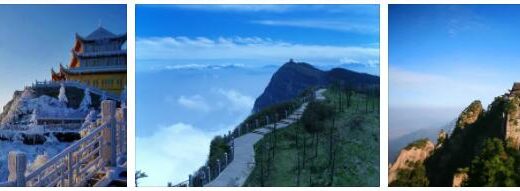Liaoning, China
Liaoning, Liauning, province in northeast China, in southern Manchuria, 151,000 km 2, (2010) 43.7 million residents (including 5.7 million Manchu – almost half of all Manchu in China -, including Mongols, Koreans and Hui); The capital is Shenyang. In the southeast Liaoning borders on North Korea (border river Yalu), in the south the province has a 1,650 km long coast with the fertile estuary of the Liao He.The entire eastern part with the Liaodong peninsula belongs to the east Manchurian mountains, the southwest to the southwest Manchurian mountains, which in the northwest to the Great Chingan rises to over 2,000 m above sea level. In agriculture, the main foodstuffs kaoliang and millet as well as maize and soybeans are grown. Liaoning is the main cotton and tobacco producer in Manchuria; Raw silk production and fruit growing (especially apples) on Liaodong. Rich mineral resources caused the development of today’s dominant heavy industry during Japanese rule; alongside traditional textile industry and processing of agricultural products. Liaoning has coal, especially at Fushun, where oil shale is also stored, and at Fuxin, as well as iron ores, furthermore magnesite deposits (on Liaodong), copper, Lead, zinc and molybdenum deposits; in addition, important oil and natural gas reserves. The energy supply is ensured by thermal power plants and a hydropower plant operated jointly with North Korea on the Yalu. Extensive industrial complexes characterize the urban areas of Shenyang, Fushun, Anshan and Benxi, which were created primarily on the basis of mineral resources and were of great importance for the economic development of the country after 1949. In particular, the iron and steel, petroleum and chemical industries, vehicle and mechanical engineering emerged. Foreign investment is increasing in Shenyang and Dalia. Extensive industrial complexes characterize the urban areas of Shenyang, Fushun, Anshan and Benxi, which were mainly built on the basis of mineral resources and were of great importance for the economic development of the country after 1949. In particular, the iron and steel, petroleum and chemical industries, vehicle and mechanical engineering emerged. Foreign investment is increasing in Shenyang and Dalia. Extensive industrial complexes characterize the urban areas of Shenyang, Fushun, Anshan and Benxi, which were mainly built on the basis of mineral resources and were of great importance for the economic development of the country after 1949. In particular, the iron and steel, petroleum and chemical industries, vehicle and mechanical engineering emerged. Foreign investment is increasing in Shenyang and Dalia.
Shenyang
Shenyang [ ʃ εnja ŋ ], Schenjang, formerly Shengking [ ʃ -], Fengtien, Mukden, capital of Liaoning Province, in northeast China, in the south of the Manchurian Plain, on the right bank of the Hun He (tributary of the Liao He), 8, 12 million residents in the entire administrative area, of which 6.25 million residents in the city districts; according to aristmarketing, most important north-east China economic, science and cultural center with Liaoning University, Northeast China Technical University, universities of energy, finance and economics, medicine, music and art, Northeast Museum, North Mausoleum and several libraries and theaters. On the basis of nearby coal and ore deposits, a diverse industry developed under Japanese influence from the beginning of the 20th century, which was significantly expanded after 1950. The main branch of industry today is machine (especially machine tools) and motor vehicle construction (in cooperation with General Motors and BMW), as well as locomotive, tractor, wagon and aircraft construction, non-ferrous metal ore smelting, electrotechnical and electronic, chemical and pharmaceutical, food, textile, Leather, paper and glass industries; second largest (after Beijing) railway junction in China, river port, airport; Subway under construction.
The palace complex (Gugong) is similar to the Forbidden City in Beijing (17th and 18th centuries); two palace halls are now partially used as a museum. In the north of the city the imperial tomb (Beiling), which was laid out for the founder of the Qing dynasty, Abahai († 1643), an axial system with gates of honor and avenue flanked by animal sculptures, “square city”, towers and burial mounds; today expanded to a large public park with lakes and pavilions.
Shenyang was the capital of the Qing Dynasty (Manchu Emperors) before they conquered the Chinese Empire. Even after the government headquarters were moved to Beijing (1644), Shenyang, provincial capital since 1658, retained its importance as an old imperial city. 1901-11 it was the seat of the viceroy of the Manchurian provinces. The Japanese took power in 1931 (until 1945).



